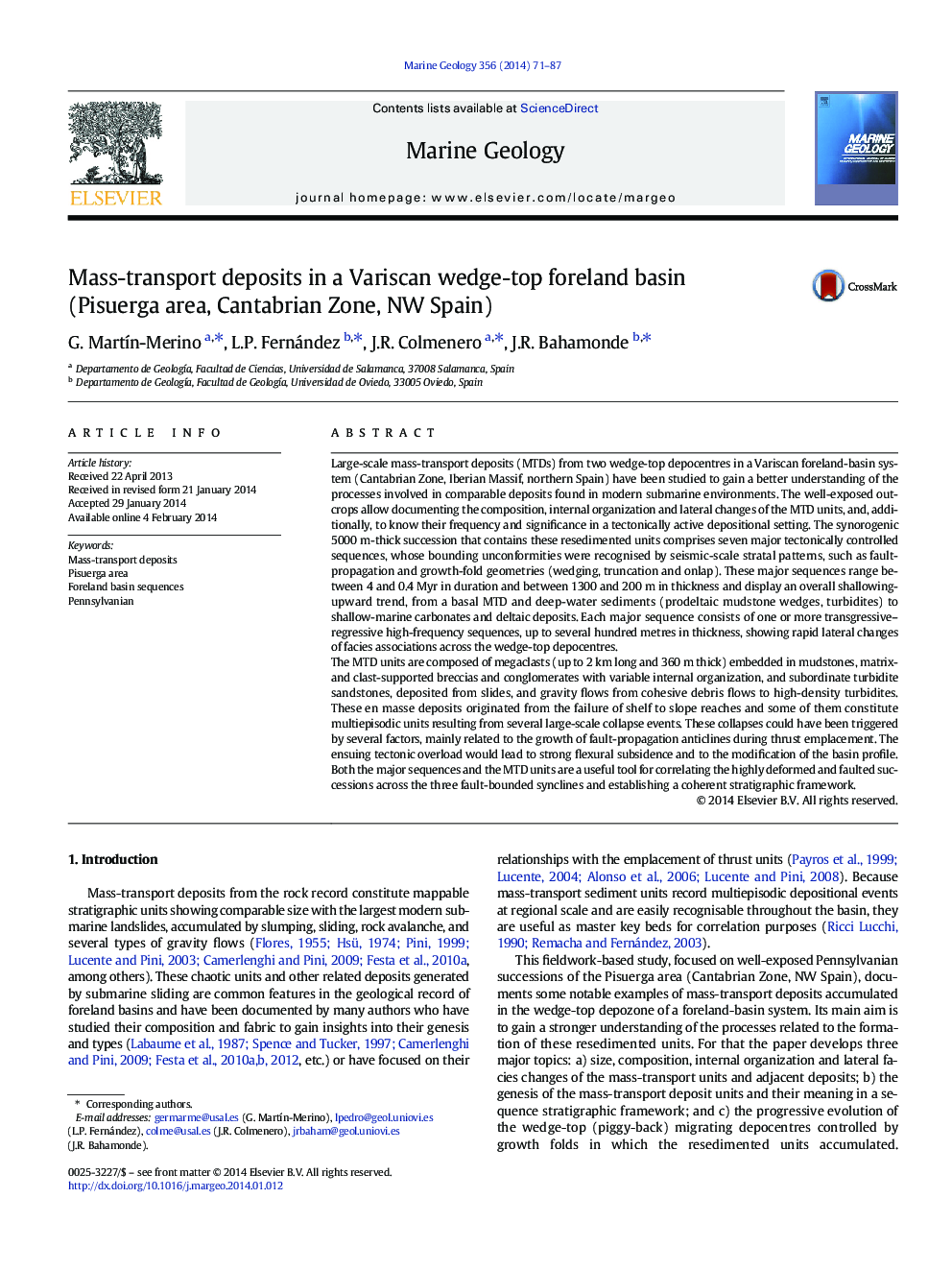| کد مقاله | کد نشریه | سال انتشار | مقاله انگلیسی | نسخه تمام متن |
|---|---|---|---|---|
| 6441693 | 1639096 | 2014 | 17 صفحه PDF | دانلود رایگان |

- The Pisuerga area constituted two Variscan wedge-top depocentres.
- Its synorogenic succession comprises seven depositional sequences.
- Each sequence has a basal mass-transport deposit.
- Mass-transport deposits record the collapse of carbonate systems.
- Thrusting ultimately controlled the collapse, as growth-stratal patterns suggest.
Large-scale mass-transport deposits (MTDs) from two wedge-top depocentres in a Variscan foreland-basin system (Cantabrian Zone, Iberian Massif, northern Spain) have been studied to gain a better understanding of the processes involved in comparable deposits found in modern submarine environments. The well-exposed outcrops allow documenting the composition, internal organization and lateral changes of the MTD units, and, additionally, to know their frequency and significance in a tectonically active depositional setting. The synorogenic 5000Â m-thick succession that contains these resedimented units comprises seven major tectonically controlled sequences, whose bounding unconformities were recognised by seismic-scale stratal patterns, such as fault-propagation and growth-fold geometries (wedging, truncation and onlap). These major sequences range between 4 and 0.4Â Myr in duration and between 1300 and 200Â m in thickness and display an overall shallowing-upward trend, from a basal MTD and deep-water sediments (prodeltaic mudstone wedges, turbidites) to shallow-marine carbonates and deltaic deposits. Each major sequence consists of one or more transgressive-regressive high-frequency sequences, up to several hundred metres in thickness, showing rapid lateral changes of facies associations across the wedge-top depocentres.The MTD units are composed of megaclasts (up to 2Â km long and 360Â m thick) embedded in mudstones, matrix- and clast-supported breccias and conglomerates with variable internal organization, and subordinate turbidite sandstones, deposited from slides, and gravity flows from cohesive debris flows to high-density turbidites. These en masse deposits originated from the failure of shelf to slope reaches and some of them constitute multiepisodic units resulting from several large-scale collapse events. These collapses could have been triggered by several factors, mainly related to the growth of fault-propagation anticlines during thrust emplacement. The ensuing tectonic overload would lead to strong flexural subsidence and to the modification of the basin profile.Both the major sequences and the MTD units are a useful tool for correlating the highly deformed and faulted successions across the three fault-bounded synclines and establishing a coherent stratigraphic framework.
Journal: Marine Geology - Volume 356, October 2014, Pages 71-87